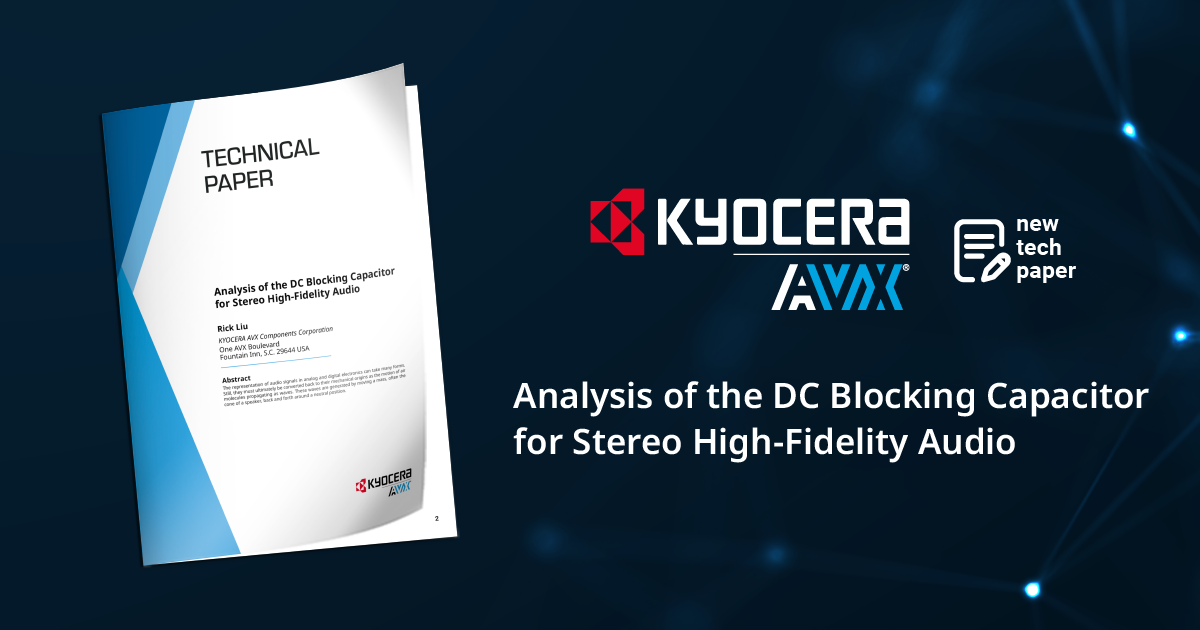Analysis of the DC Blocking Capacitor for Stereo High-Fidelity Audio
Written By: Rick Liu Abstract:
The representation of audio signals in analog and digital electronics can take many forms. Still, they must ultimately be converted back to their mechanical origins as the motion of air molecules propagating as waves. These waves are generated by moving a mass, often the cone of a speaker, back and forth around a neutral position. As such, any fixed offset in the audio signal, represented by a DC bias, is simply a waste of energy and possibly a source of imbalance in the resulting sound wave. Series blocking capacitors are generally used for each audio channel to eliminate the potential of any DC component.While most capacitors will adequately remove the DC component from the output, each of the many varieties will also alter the actual audio signal to varying degrees. For high-fidelity applications, proper selection of these blocking capacitors can be a critical performance factor.
DOWNLOAD TECHNICAL PAPER
The representation of audio signals in analog and digital electronics can take many forms. Still, they must ultimately be converted back to their mechanical origins as the motion of air molecules propagating as waves. These waves are generated by moving a mass, often the cone of a speaker, back and forth around a neutral position. As such, any fixed offset in the audio signal, represented by a DC bias, is simply a waste of energy and possibly a source of imbalance in the resulting sound wave. Series blocking capacitors are generally used for each audio channel to eliminate the potential of any DC component.
While most capacitors will adequately remove the DC component from the output, each of the many varieties will also alter the actual audio signal to varying degrees. For high-fidelity applications, proper selection of these blocking capacitors can be a critical performance factor.


